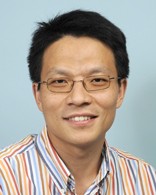Monash University researchers have brought next generation energy storage closer with an engineering first: a compact graphene-based device that lasts as long as a conventional battery.
Published recently in Science, a research team led by Professor Dan Li of the Department of Materials Engineering has developed a new strategy to engineer graphene-based supercapacitors, making them viable for widespread use in renewable energy storage, portable electronics, and electric vehicles.
Supercaps are generally made of highly porous carbon impregnated with a liquid electrolyte to transport the electrical charge. Known for their almost indefinite lifespan and an ability to re-charge in seconds, the drawback of existing supercaps is their low energy-storage-to-volume ratio – known as energy density. Low energy density of five to eight Wh/liter, means SCs are unfeasibly large or must be re-charged frequently.
Professor Li’s team has created an SC with energy density of 60 Watt-hours per litre, a value comparable to lead-acid batteries and around 12 times higher than commercially available SCs.
“It has long been a challenge to make SCs smaller, lighter, and compact to meet the increasingly demanding needs of many commercial uses,” Professor Li said.
Graphene, formed when graphite is broken into layers one atom thick, is very strong, chemically stable, and an excellent electrical conductor.
To make their uniquely compact electrode, Professor Li’s team exploited an adaptive graphene gel film they had previously developed. They used liquid electrolytes – generally the conductor in traditional SCs – to control the spacing between graphene sheets on the sub-nanometer scale. In this way the liquid electrolyte played a dual role: maintaining the minute space between the graphene sheets and conducting electricity.
Unlike traditional ‘hard’ porous carbon, where space is wasted with unnecessarily large ‘pores’, Professor Li’s electrode maximizes density without compromising porosity.
To create their material, the research team used a method similar to that used in traditional paper making, meaning the process could be easily and cost-effectively scaled up for industrial use. “We have created a macroscopic graphene material that is a step beyond what has been achieved previously. It is almost at the stage of moving from the lab to commercial development,” Professor Li said. The work was supported by the Australian Research Council.
Monash University
www.monash.edu
Filed Under: Energy storage, News





